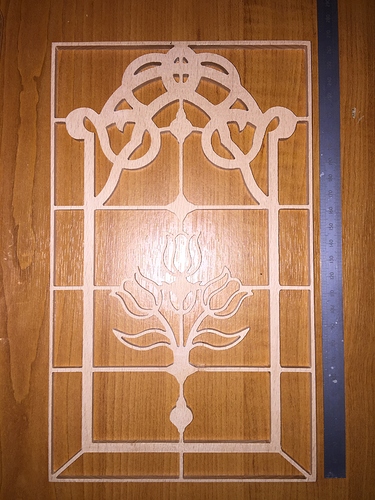So having mastered the technique for the coasters, I was pondering a stained glass window insert.
A slightly nerve-wracking 10 machine hours later, having picked 2mm geometry for the frame and support bars (because it matches the window it will fit in), it is ready. Cuts in this piece of (I believe) Cherry were 1/4" clearance, 1/8" first detail and 1/16" final detail at 6mm stock thickness, 20,000rpm ‘gently’ on feed rate. An outer frame with tabs mirroring the braces was used, and a few dots of carefully places super-glue to stop the central area lifting or moving, sliced away with a razor blade once cutting was finished.
I have to say I am really impressed at what the 3XL has achieved. Now to await new supply of resin and the pouring can re-commence!! Will be a few days, depends on Amazon’s delivery times in these ‘cram it in’ last few shopping days before Covid-Lockdown Christmas.
